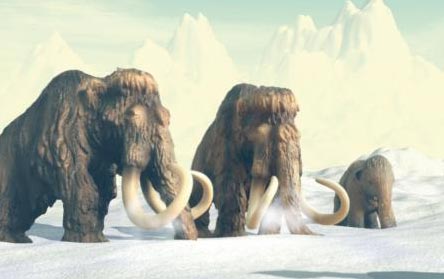Woolly Mammoth Blood Goes on Display in Canadian Museum
Blood from a Woolly Mammoth on Exhibit for the Very First Time
A small vial of deep red mammoth haemoglobin along with a portion of mammoth tusk recovered from Grunthal, Manitoba (Canada), are the latest additions to the Canadian Fossil Discovery Centre and its first Ice Age exhibit allowing people an unprecedented opportunity to get up close and personal to an ancient creature which became extinct approximately 10,000 years ago. With the possibility of geneticists being able to clone a Woolly Mammoth becoming closer, visitors to the museum have the opportunity to view some of the material, the like of which may play a role in the bringing back to life of an extinct species.
Woolly Mammoth Haemoglobin
The exhibit was made possible thanks to a donation of the haemoglobin from Winnipeg’s Kevin Campbell, a University of Manitoba professor of environmental and evolutionary physiology and vice-president of the board for the museum.
An Opportunity to Get Close to Woolly Mammoths
Picture credit: Everything Dinosaur
Campbell, whose research was instrumental in the resurrection of the haemoglobin, explained how recent advances in biotechnology enabled him to not only re-create functional genes from extinct animals, but also to faithfully assemble and study the proteins the genes once encoded. By doing so they were able to determine some remarkable ‘living’ characteristics of Woolly Mammoths.
For models of prehistoric elephants and other extinct creatures: Prehistoric Elephants and Prehistoric Animal Figures (Eofauna Models).
Professor Campbell explained:
“For instance, resurrecting this red blood cell protein haemoglobin from a Woolly Mammoth has shown that the normally temperature sensitive protein evolved novel adaptations that, unlike living (tropical) elephants, enabled it to do its job of delivering oxygen to body tissues in the cold conditions these beasts faced.”
He went onto add:
“Prior to these new techniques we had no way to deduce, let alone test for, these kinds of attributes from fossilised remains. Being able to re-create and study authentic genetic material from extinct species is a whole new frontier in palaeo-biology and research into ancient life.”
The last time of species, H. sapiens got this close to a Woolly Mammoth (Mammuthus primigenius) was something like 10,000 years ago. The Canadian Fossil Discovery Centre’s acting executive director, Peter Cantelon exclaimed:
“We are thrilled to be able to be at the forefront of palaeo-biology with this one-of-a-kind display. If you were to go back in time with a syringe, remove Mammoth blood and separate out the haemoglobin, this is exactly what you would have.”
Cloning Extinct Species
The cloning of extinct species such as the Quagga, the Woolly Rhino and of course the Woolly Mammoth is now a possibility thanks to developments in the extraction, storage and study of ancient DNA (deoxyribonucleic acid). However, this aspect of science is extremely controversial. There seems to be an almost daily stream of reports related to the study of “Ancient DNA”, for example, team members at Everything Dinosaur recently had their attention drawn to a scientific paper (yet to be peer reviewed) that discussed the DNA evidence for the existence of “Big Foot” and where it might fit on the hominin family tree.
To read an article on the possibility of bringing extinct animals back: Resurrecting Prehistoric Animals.
When working with Year 6 pupils yesterday, at a school in the Lake District (North-west England), the moral implications for bringing back a long dead animal such as a Woolly Mammoth was discussed.
Does because we can, does this mean we should?


